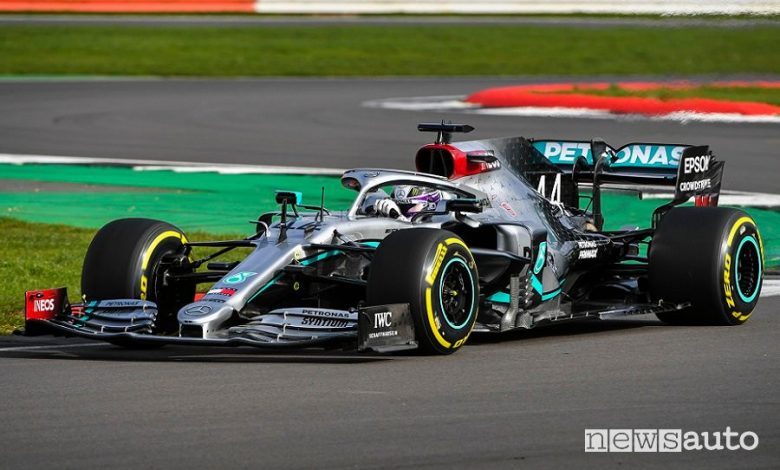

While the livery doesn’t look bad, its another case of having a near identical looking car as last year. But it turns out there is a single red star among all the silver starts on the engine cover in memory of Lauda. The red is most promient at the air scoop just above the driver, like a red cap which I thought was a clever nod to Niki Lauda. It retains the silver-blue theme as usual with a touch of red. The new livery for the W11 was unveiled earlier as Mercedes announced its new Principal Partner INEOS. The front gets more structural complexity, the middle gets a repositioned upper-side-impact tube and the rear features “an adventurous suspension layout”. The team breaks down the changes for the 2020 car into three parts – front, middle and rear. It also gets larger radiators to help with that. Mercedes acknowledges that the 2019 power unit struggled in hot temperatures and the team has worked to improve the cooling package for W11. For reference, a usual road car engine would usually reach about 30% thermal efficiency.

Since the 1.6-litre turbo-hybrid era began in 2014, Mercedes has improved its PU’s thermal efficiency from around 44% to over 50%. The W11 also gets an all-new power unit called the M11 EQ Performance. The regulations have remained relatively stable ahead of the 2021 cars, so as usual the visible changes are in the aerodynamic details. So, what’s new with the W11 Silver Arrow? The 2020 season also marks the 10th anniversary of Mercedes’ return to F1 as a works team. Other things discussed were the Melbourne race cancellation, the Silverstone F1 test run by Mercedes and how they’ll get the team from the United Kingdom to Barcelona in Spain for the Spanish GP following the British GP.Ladies and gents, this is the car that is most likely to give Mercedes its 7th consecutive Formula 1 Constructor’s title. The people that build the garage, they should be done by the time we arrive, and then they’ll be moving on to the next one, coming back to get ready with the garage built in Silverstone,” summed up Fanson. They’ll be building the garage, building the awnings at the back of the for us, so when we move everything across to Hungary on Sunday night and Monday, we’ll arrive to a built garage. Whilst we are qualifying and racing in Austria, we will have a crew of people in Budapest. “For the set-up and pack-up operations, nothing really changes for us. “In agreement with F1, what we are actually going to do is move the Mercedes race trucks away from the garages and we’ll be supplying our own tents and awnings to give us more working space where it is easier to social distance and work comfortably. “It won’t be the same set-up as normal European races because there won’t be any motorhomes. The high-level Mercedes staffer provided insight on how F1 paddock facilities will be set-up, and constructed one step ahead to minimize strain on the core teams. Then, Fanson was back on the screen, this time explaining how the process of arriving in Budapest will go from Austria in a space of few days, and what the paddock will look like – a topic on which he shared some particularly noteworthy information. After that, his Mercedes colleague took over briefly, to chat about the need for quick decision-making, such as when the F1 team realised they would have to fly on a charter flight, and had to book one extraordinarily quickly to ensure they’d have one.


 0 kommentar(er)
0 kommentar(er)
